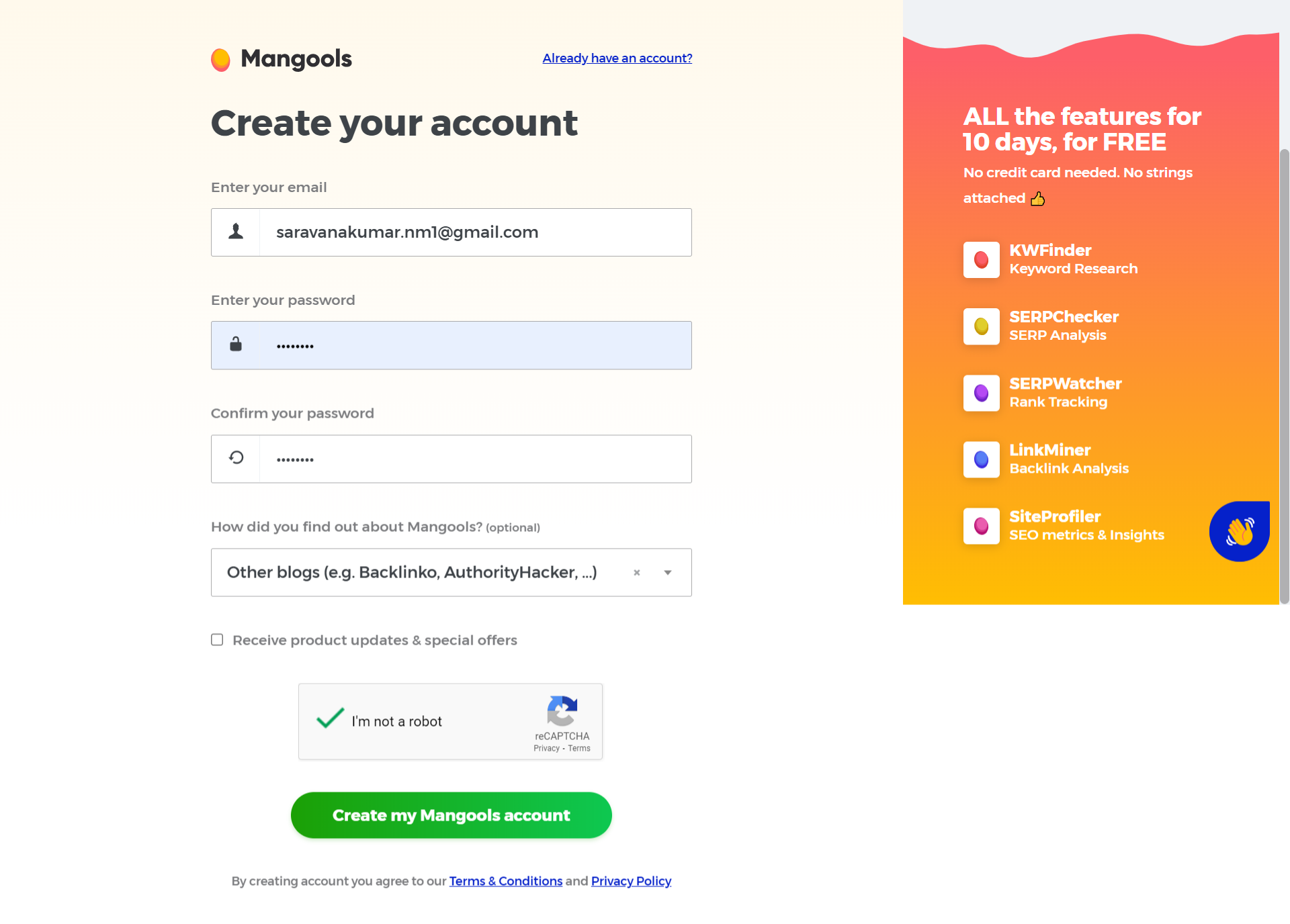In this article, we’ll look at how to find low competition keywords with high traffic for your website in 3 simple steps.
Step 1: Discover keywords that people are looking for in relation to your website.
Step 2: Select the keywords for which you want to write the content.
Step 3: How to find low competition keywords with high traffic.
Assume you have a website and want your content to be found on Google. If you post content on a random topic or keyword that already has a lot of competition, your content will almost certainly never appear in the search results. Because larger sites have already covered that keyword. So, in order for your content to appear in search results, you must first identify a keyword with low competition and then create content for that keyword.
The first step is to discover the keywords that people are looking for in relation to your website. So, let’s go to keyword.io to find the keywords, and you’ll see this page.

This is the website that will assist us in locating our keywords. Enter the topic of your website here. I’m going to enter gaming laptops and now, if we press the Search button! As you can see in below screenshot, we have a list of all the keywords related to our topic that people search for.
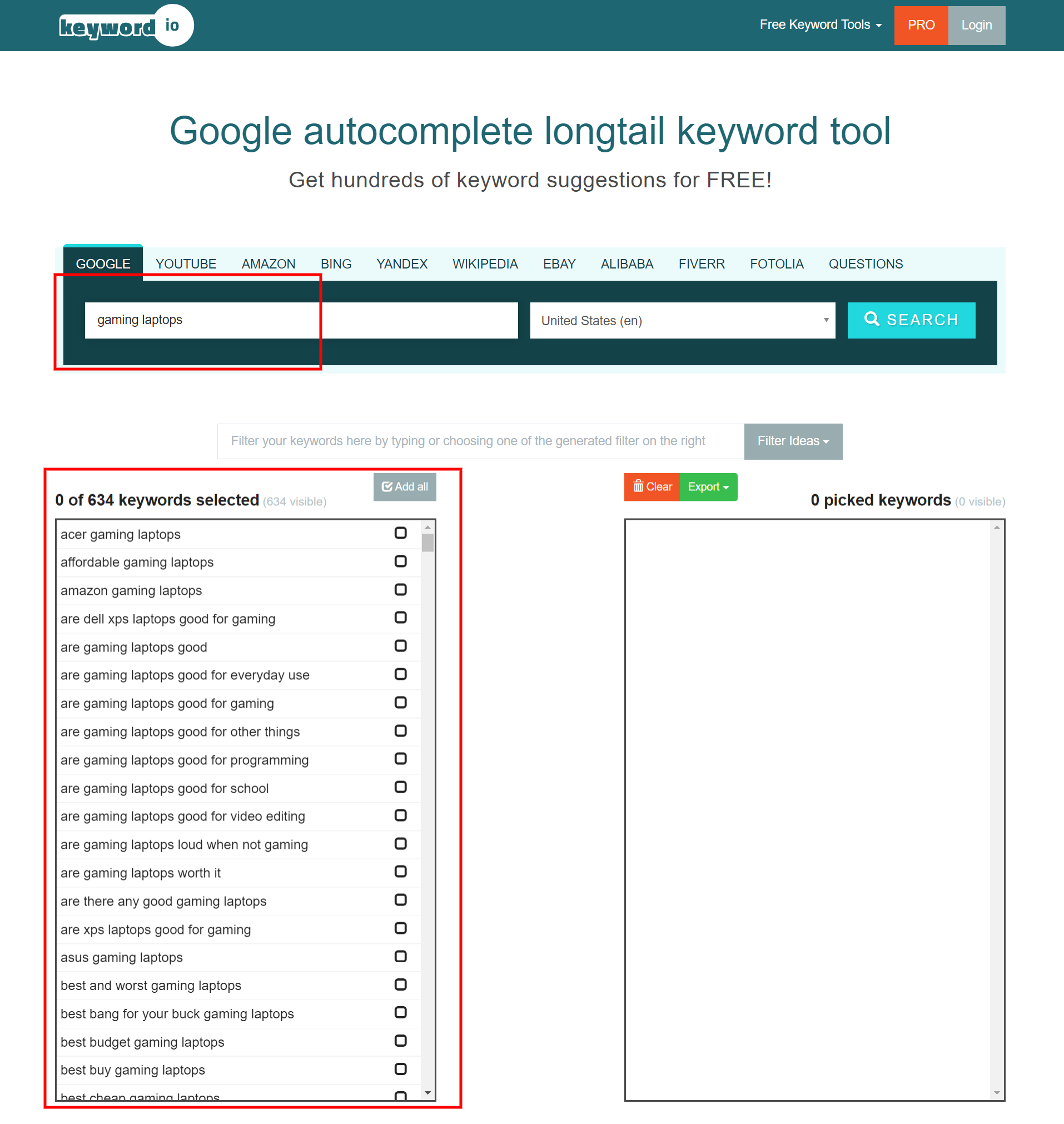
So these are the terms that people commonly search for on Google. Once you’ve discovered these keywords, we’ll move on to the second step, which is to ‘Select the keywords for which you want to write the content.’ So choose topics that you can easily write about on your blog or website. I’m going to pick the topics that I found to be interesting, and now they’ve been added to the list.
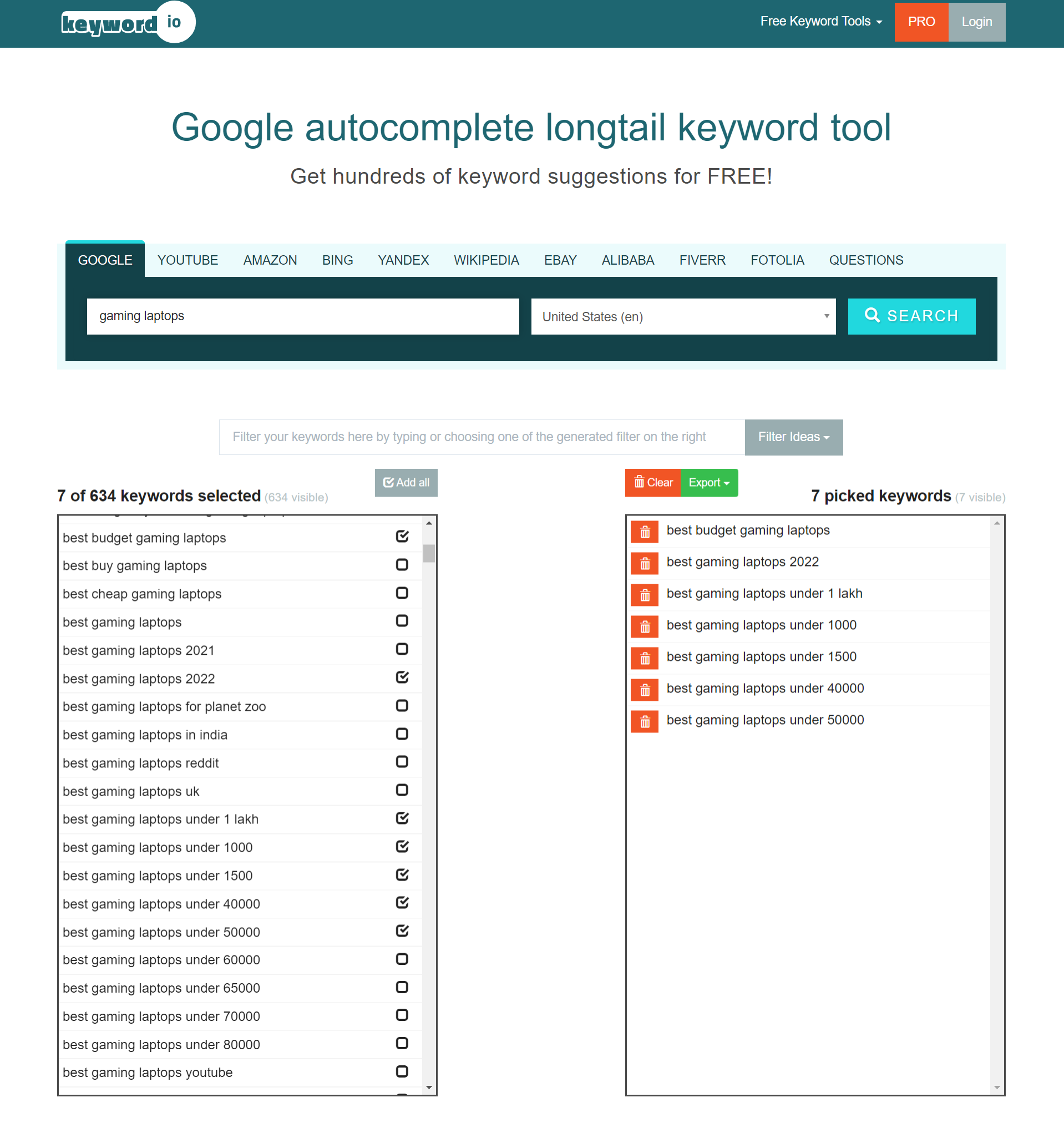
You can now proceed to step 3, which is to determine the level of competition for these keywords. So, to determine the competition for these keywords, we’ll take two steps. ‘Create an account on a seo tool called KWFinder,’ says the first step. When you arrive at the page, click “Start 10-day Free Trial” on the top right corner.
Then enter your email address and password before clicking “Create My Mangools Account” and now the account has been created.
After you’ve created your account, go back to the previous tab (keyword.io) and copy the keywords. We can proceed to the final step in determining the competition for these keywords, which is to ‘Add these keywords into this tool.’ So, to add the keywords, return to the tool, click on SEO Tools, and then select KWFinder. Now, select go to app.
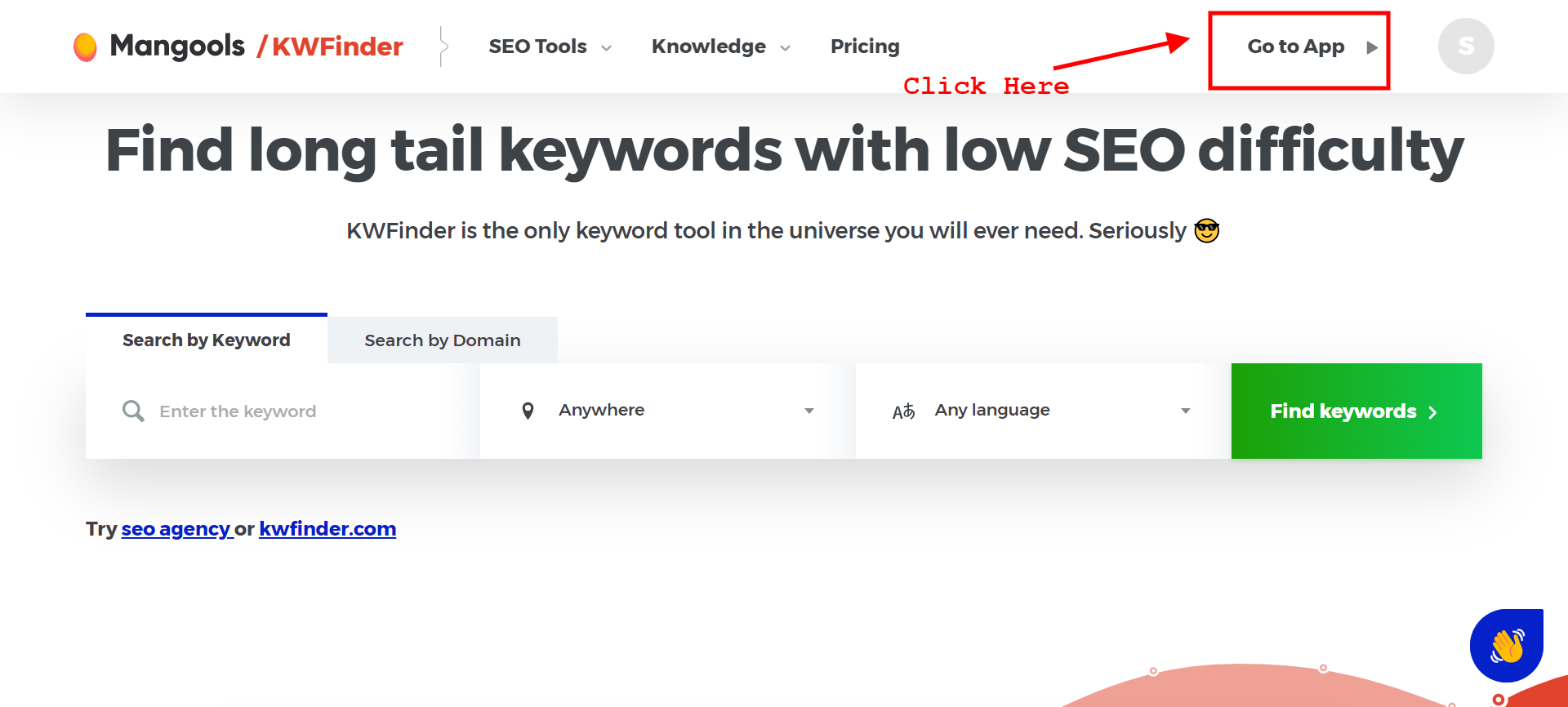
Then select import. To assess the competition for your keywords, first enter them here. So let’s go to our keywords tab and pick these keywords. And then return to KWFinder and paste the keywords into the blank area.
So we’ve entered the keywords we want into this tool. Now we’ll look at the competition for these keywords. Simply select process keywords.
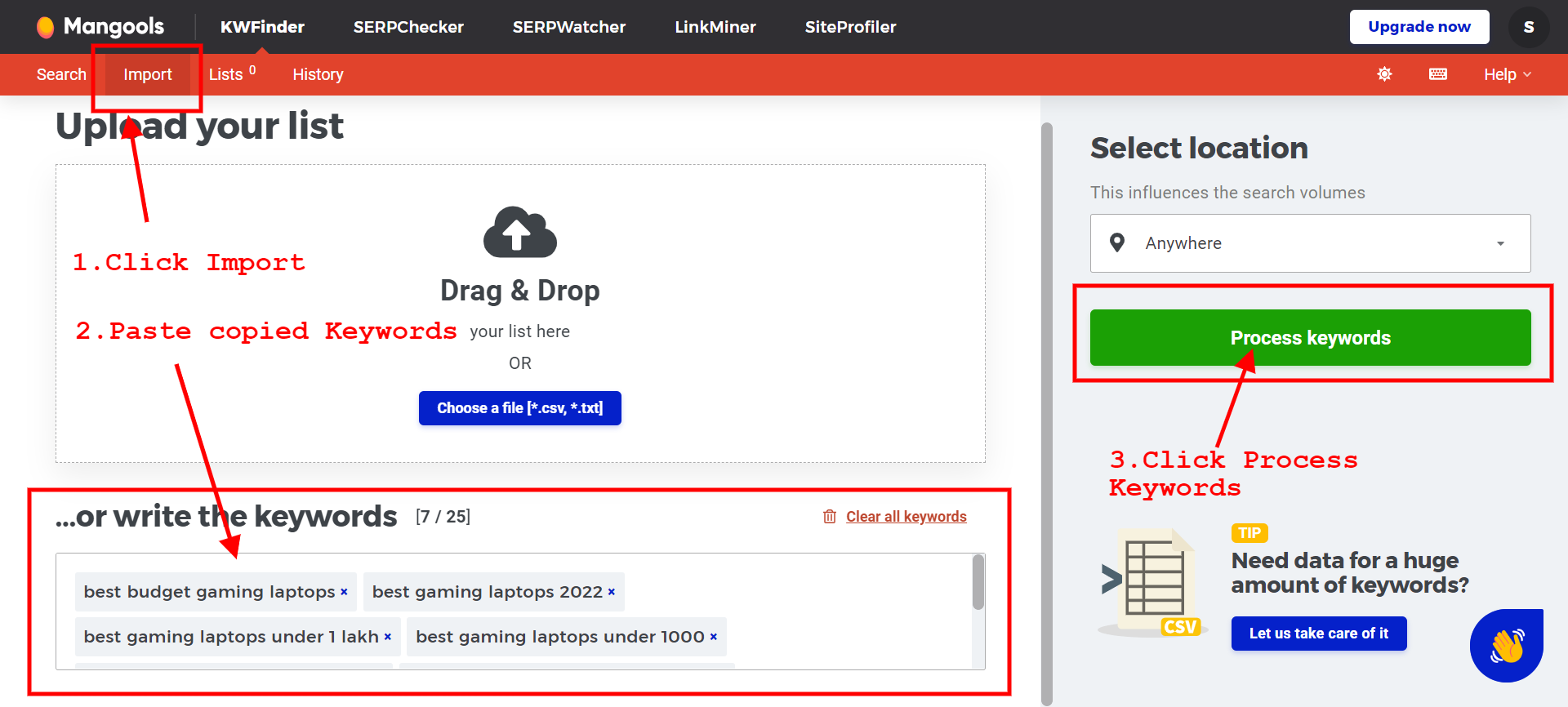
And you can now see it here. We’ve determined the level of competition for each keyword. As a result, this number indicates how difficult it is to rank for this keyword.
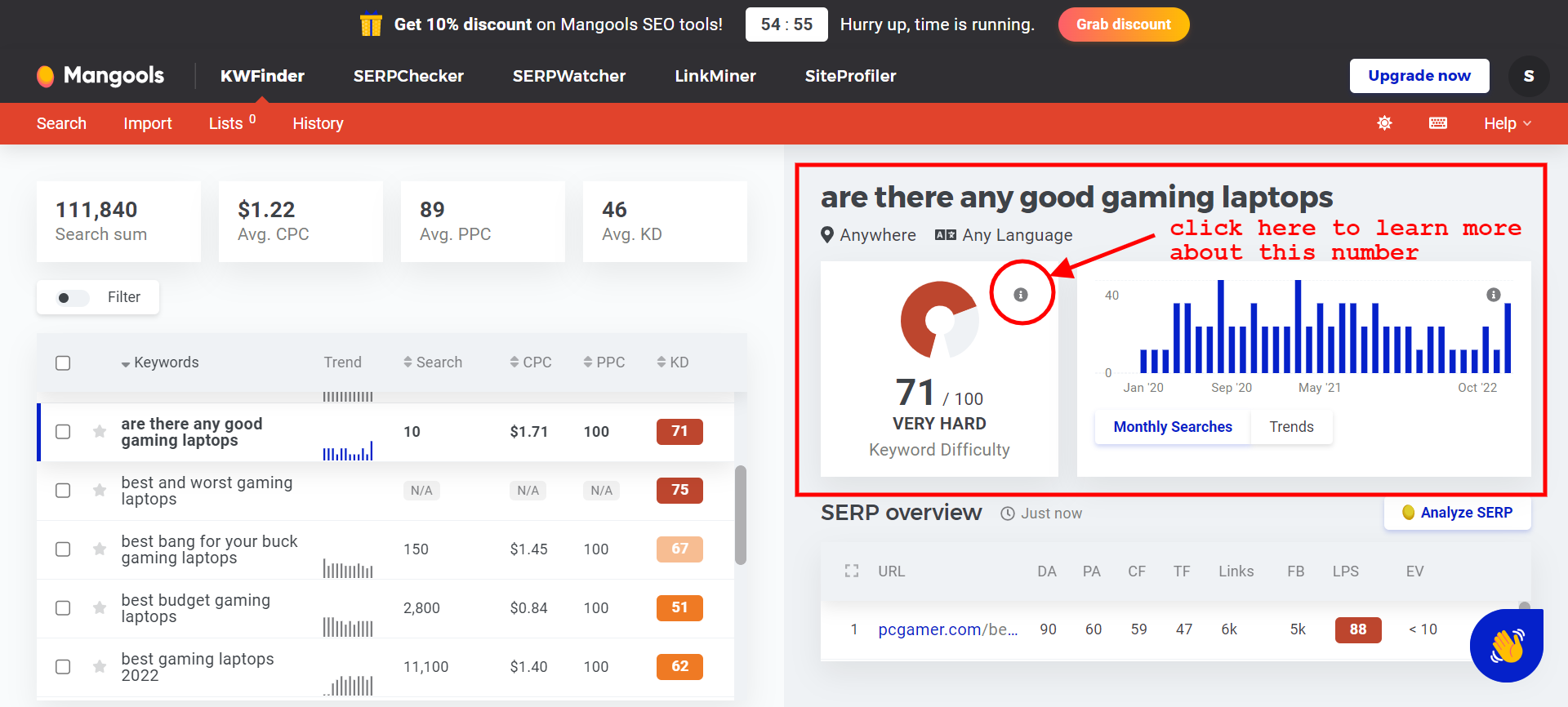
Now, let’s click here to learn more about this number and now you’ll see a window that shows you which keywords are simple to rank for and which are challenging. To find a keyword that is simple to rank for, we need to find one with a difficulty of less than 30.
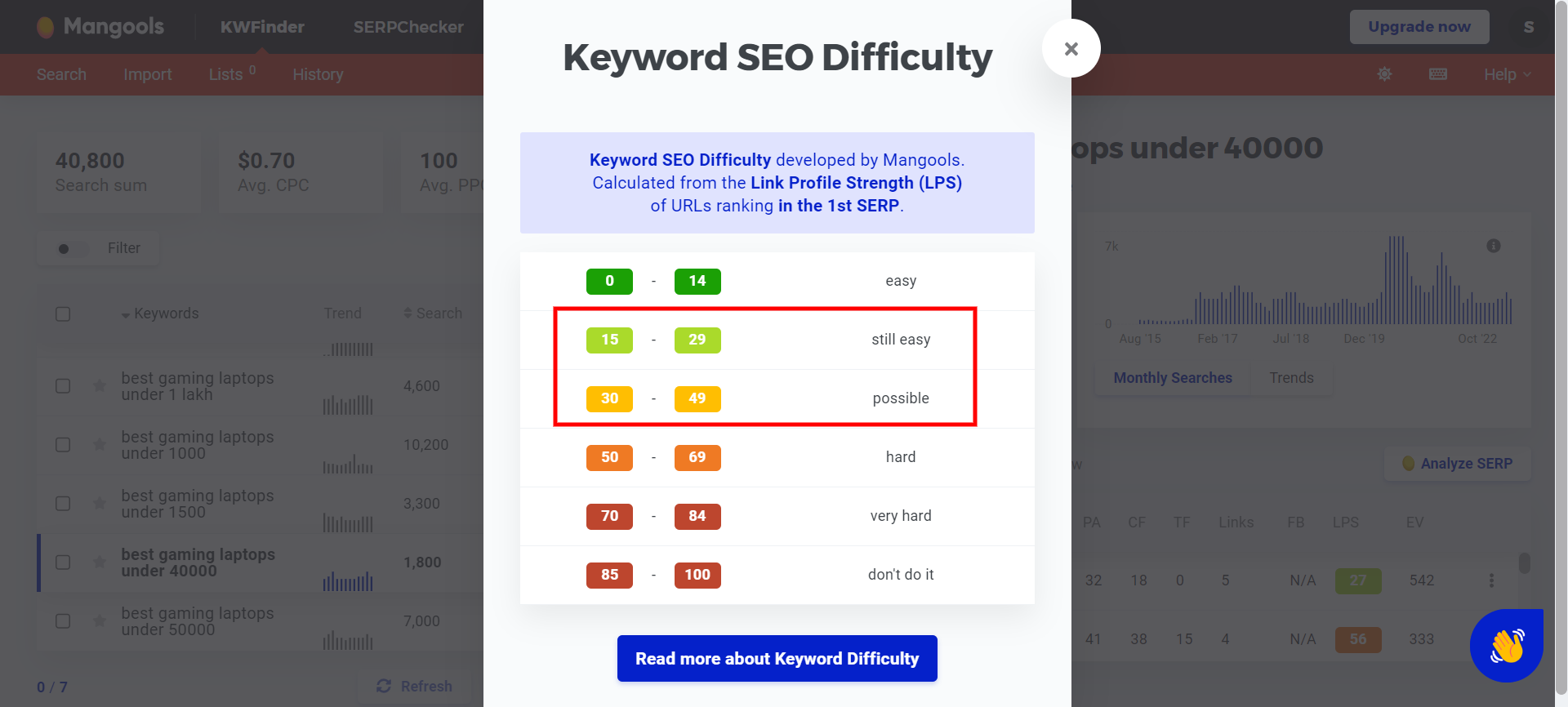
So let’s wrap this up… And let’s see if we can find a keyword with a difficulty of less than 30. This keyword has a difficulty score of 71, which means that if we create content for it, it is unlikely to rank on Google. So let’s take a look down.

Now, you can see that we have a keyword with a difficulty of 21, which indicates that it has low competition and is relatively easy to rank for. Simply click the ‘keyword difficulty’ column here to get all of the low competition keywords. And now you’ll see all of the low-competition keywords at the top of the list. So, once you have this, you should look at the number of searches each keyword receives in a month. As you can see, this keyword has a low difficulty, but only a small number of people are searching for it.
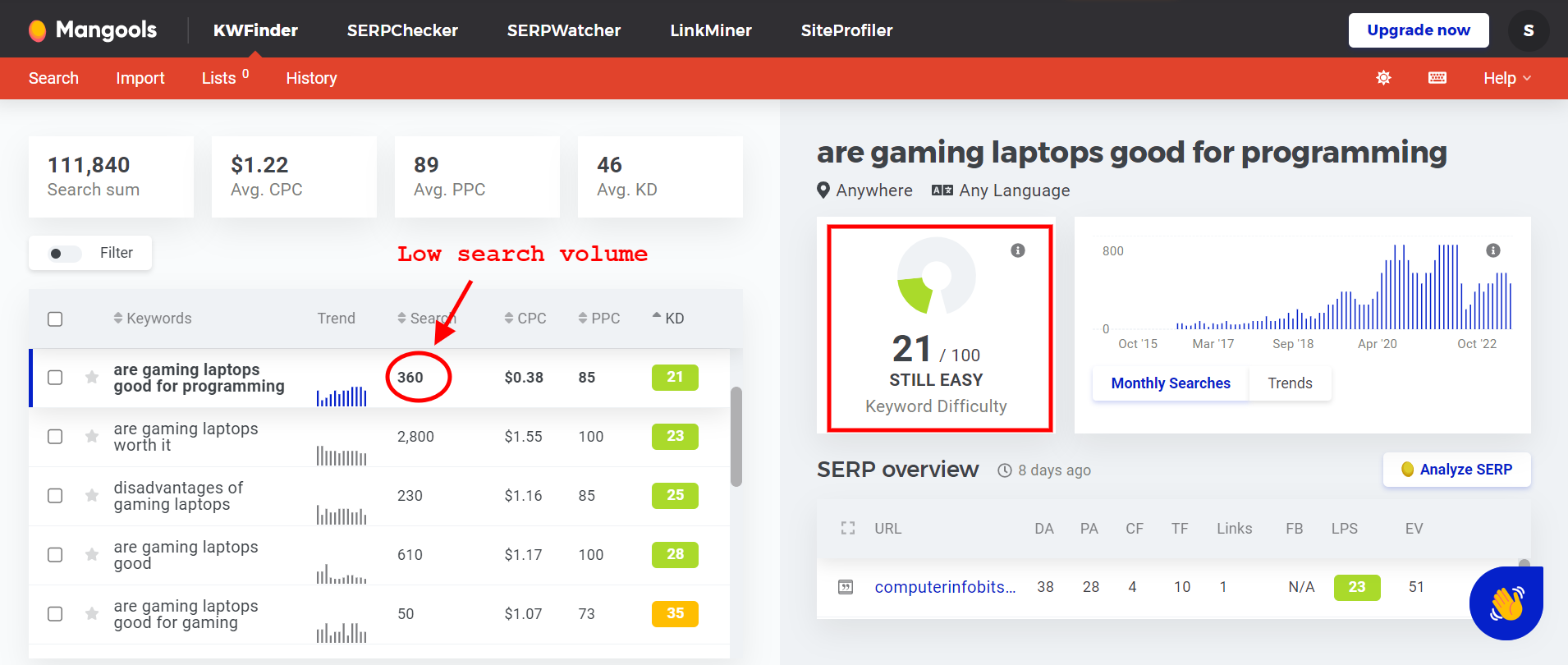
However, if you look at this keyword, you can see that it has a low difficulty as well, but it has a lot more people searching for it. This means that if we write content for this keyword on our website, it will be easier to rank and will attract more visitors to our website.
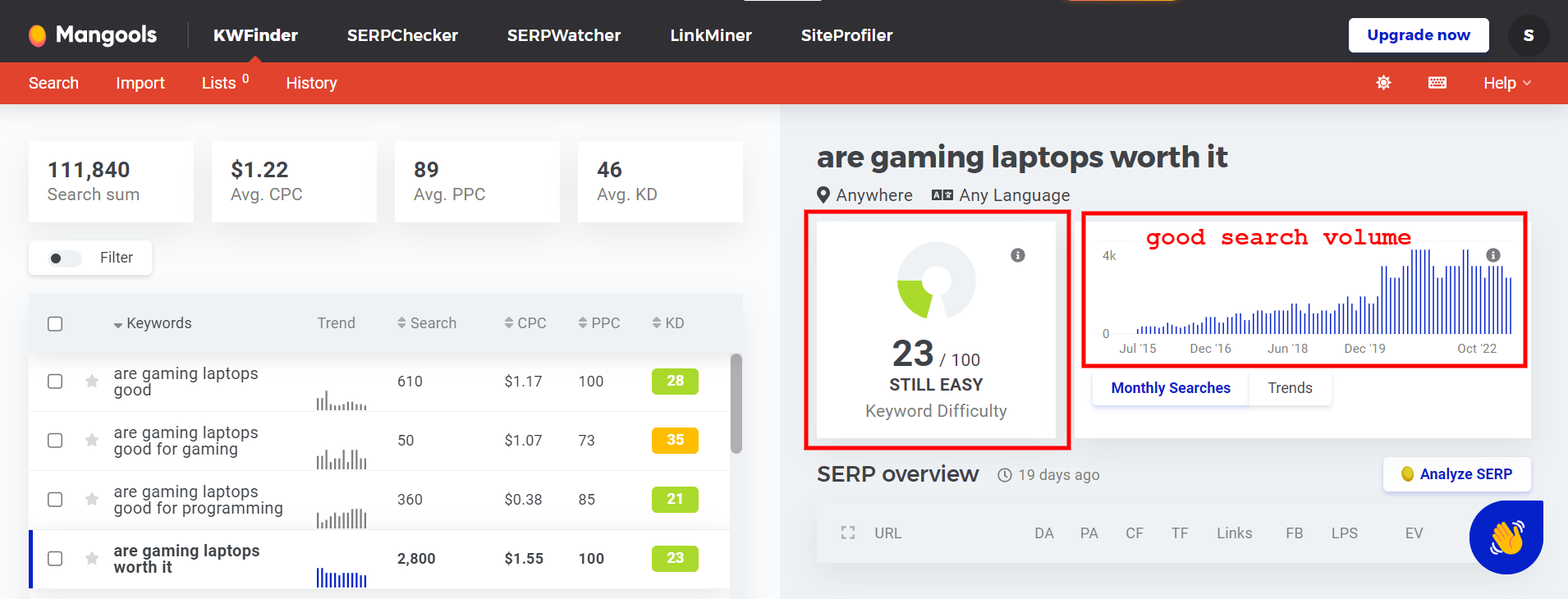
We’ve successfully identified a low-competition keyword and created a useful piece of content around it. Once you’ve published a piece of content, Google will evaluate it to see if it’s useful or valuable to the user who is searching for that keyword. If Google believes your content is relevant to this keyword, it will rank your site, and you will begin receiving visitors to your blog post. So you now understand how to find low competition keywords for your website.
KWFinder is now a premium SEO tool that is available for a 10-day free trial. After 10 days, if you do not want to pay for KWFinder and want to find more low competition keywords with high traffic, you can use a free alternative tool.



